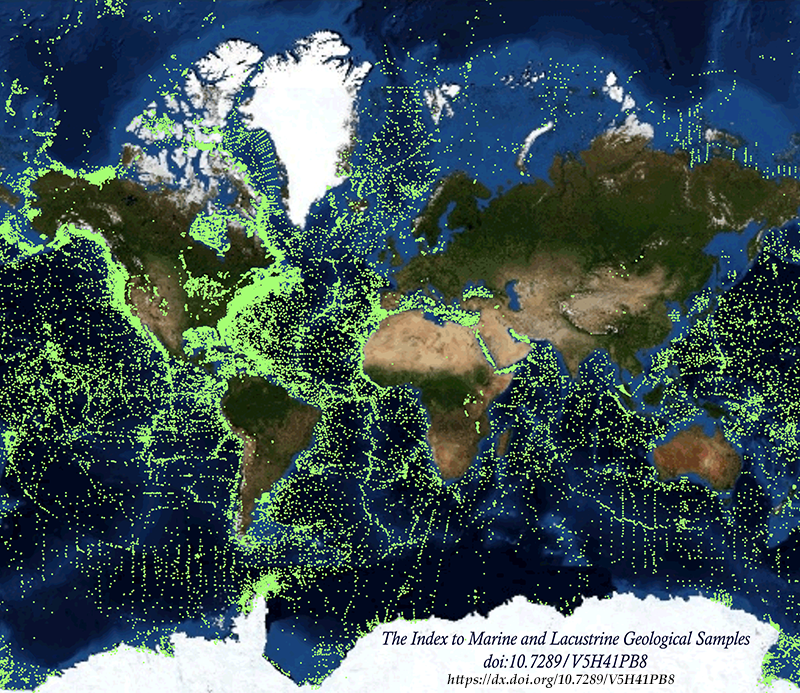 |
The Index to Marine and Lacustrine Geological Samples (IMLGS) product is being decommissioned.
Archived IMLGS data will only be available via an archive request to ncei.info@noaa.gov.
The planned retirement date is May 5th, 2025. The Index to Marine and Lacustrine Geological
Samples (IMLGS) describes and provides access to ocean floor and lakebed rock and
sediment samples curated by participating institutional and government repositories
in the U.S., Canada, the United Kingdom, France, and Germany. Each curatorial facility
prepares and submits data about their own collection to NCEI for inclusion in the
IMLGS. NCEI, on behalf of the Curator community, maintains the IMLGS database and
a dedicated web application for data discovery and access. Physical material from
most samples may be requested from the responsible Curator for scientific research
using contact information provided in IMLGS data listings. As of July 2023, the IMLGS
includes information for 228,785 discrete seabed and lakebed cores, grabs, dredges,
and drill holes worldwide. Minimum sample information required for the IMLGS includes
ship/platform name, cruise ID, sample ID, sampling device, and latitude/longitude.
Water depth, collection date, storage method, and principal investigator are usually
included. Core dimensions and depth to top and bottom of interval is available for
many core samples. Descriptions, comments, physiographic province, lithology, texture,
mineralogy, other components, glass remarks, metamorphism information, weathering
information, color, and geologic age are included for some samples. An International
Generic Sample Number (IGSN) is included, if available. Links are also provided to
related data and images at NCEI, partner institutions, and to other sources of information
including the System for Earth SAmple Registration (SESAR) and the Rolling Deck to
Repository (R2R). The IMLGS database was initially designed by a group of Curators,
in cooperation with NGDC (now NCEI), at a series of meetings sponsored by the U.S.
National Science Foundation (NSF) beginning in 1977. The Curators group continues
to meet annually to share best practices and oversee the IMLGS database. |